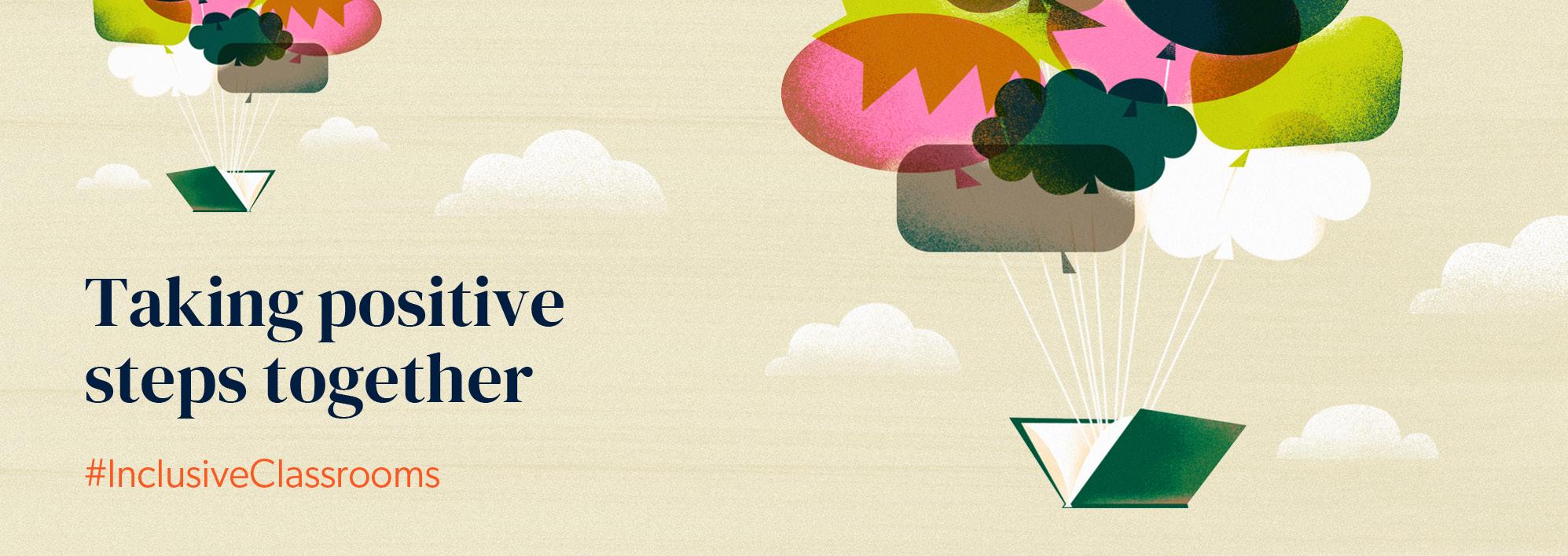Being Deaf and a mainstream teacher is an unusual pairing. If I’m honest, it’s not something I saw myself becoming. I wanted direct communication with my students and I couldn’t see how I could achieve this in a class of hearing children without bringing an interpreter into the classroom. I also knew there would be times when I didn’t understand the children or there was miscommunication. So, when I was offered a placement at Brimsdown Primary School in Enfield as part of my teacher training, I didn’t think it would work. Instead, I discovered I could be the teacher I aspired to be at a mainstream school.
Brimsdown has a unique atmosphere. Inclusivity is an integral part of the school’s ethos and, as part of this, every pupil learns British Sign Language (BSL). We have a Deaf Resource Base (DRB) for our Deaf pupils but the children spend the majority of their time in mainstream classes, with a Communication Support Worker (CSW) to support their learning. Because of this, pupils are already familiar with signing in class, so when I started teaching, the children weren’t embarrassed to use their hands to help me understand – if anything, they were eager to show me what they knew.
I’m very open to my pupils about the fact that I’m Deaf. On the first day of the new school year, when we go over rules and behaviour expectations, I also talk about my deafness. I tell the children what it means and explain that there may be times when I don’t understand them, so they may feel frustrated. We discuss how I’ll never be able to hear, but they can learn to sign. I show the children the BSL alphabet, which they keep on their desks as a reminder, and we go over this together. A couple of weeks later, I do a fun test to see who has been practising and award BSL fingerspelling certificates. I find that rewards and encouragements help in the beginning to create the habit of signing to me. Soon, the children are signing without prompts and this makes learning and teaching fluid (mostly!)
Supporting vocabulary understanding
My class know to keep still and face me when they’re talking so that I can lipread. If I don’t understand them, I encourage them to sign or fingerspell what they are trying to say, and this fosters respect and empathy for others. Using BSL also positively impacts children with English as an Additional Language and those who have speech and language difficulties. We are giving them a visual representation of a word they don’t know, and this supports them with their English and vocabulary understanding across all subjects. The children are so used to me signing now that they spot when I don’t sign a word and ask me what the sign for it is. Sometimes I won’t know so we will make up a sign. This supports the cementation of learning a new word, making it easier for them to use it in another subject or in their conversations.
Developing accepting attitudes to difference
The children in my current and previous classes all have sign names. This is part of Deaf culture, where there is a visual representation of a name. I do this because I will always remember the wrenching feeling I had in my NQT year when I asked a Deaf student to give a book to her hearing peer and she shrugged her shoulders and asked who I meant. It became apparent that she didn’t know the names of others in her class and she was in Year 4. If you have Deaf children in your class who use BSL, I strongly encourage you to involve the children in making individual sign names. This allows them to truly understand who their peers are and supports them in making stronger friendships.
Signing in class has given my Deaf students a more positive self-image. Some come from hearing families and are not exposed to other people around them signing. So, when they come into school, they can be self-conscious about using BSL. Watching me signing gives them the confidence to do the same and I encourage whole class signing for key words in learning or when we have signing assemblies. Again, watching their peers use BSL gives them the courage to do the same. It encourages diversity and this trickles down to parents and the wider community, helping to develop a more accepting attitude to differences.
Creating an environment where everyone can thrive
From one teacher to another, I’m very aware of our ever-increasing workload, lack of personal time, and trying to juggle our home lives, along with a packed timetable that needs planning and preparing for. But I often get asked “what can I do to make my class more inclusive?” It starts with taking the time to understand your students’ needs and changing your actions to meet this. At Brimsdown, staff have the option to acquire accredited certificates for learning BSL on site. Those who have done this are very confident in using BSL to help deaf staff and pupils around the school. This is needed across all schools; there are so many other Deaf staff who could be role models, sharing their knowledge and skills with students in a mainstream school.
Inclusivity is a two-way street; we all need to work together to achieve it. When this happens, it creates an environment where everyone can thrive.

About the author
My name is Alysha Allen and I am a proud Deaf BSL user. I’ve been teaching for 4 years now. I work in a mainstream school and teach using a mixture of BSL and spoken speech. I love my job, seeing the children learn sign language and using it throughout the school is amazing!
My work colleagues have supported me throughout my teaching journey and I feel privileged to be part of teaching and being involved in developing the future generation.
